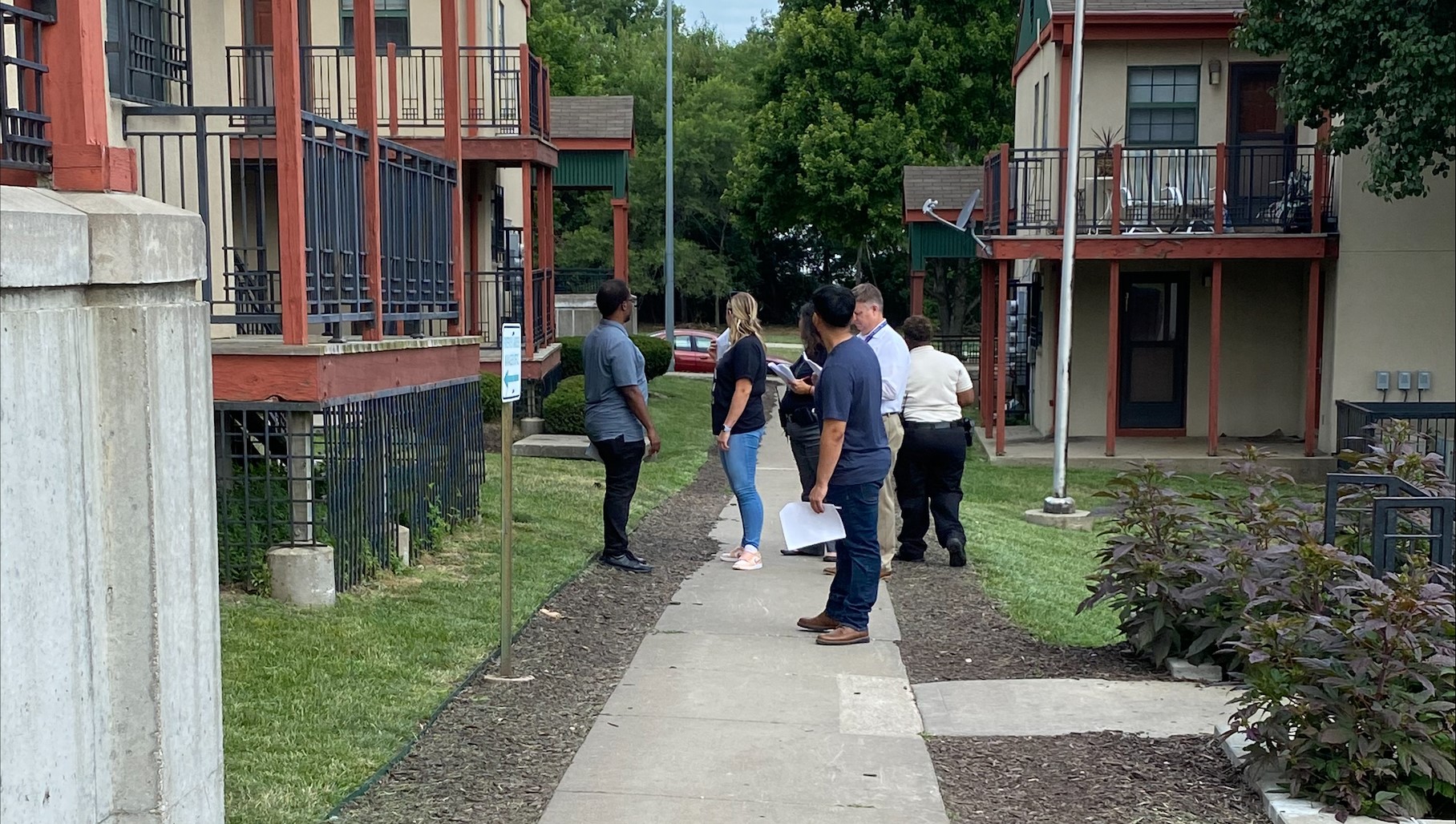MOCSA’s prevention department supports community-based coalitions in both Missouri and Kansas to prevent sexual assault and other forms of violence. One way MOCSA supports the community is by conducting Crime Prevention Through Environmental Design (CPTED) Assessments of neighborhoods, Housing Authority developments, and other communities using the Community by Design Safety Toolkit.
MOCSA encourages residents to use the toolkit and conduct assesments on their own with provided resources, but MOCSA will also assess areas along with members of the Housing Authority of Kansas City Missouri’s (HAKC) Public Safety, Development Management, Maintenance, and Residential Associations. Together, the team walks through communities using the six CPTED principles as safety guidelines within the toolkit.
About CPTED and the Toolkit
Crime Prevention Through Environmental Design or CPTED is a tool to empower neighbors to improve their communities by making changes to shared spaces (added street lights, sidewalks, neighborhood clean-ups, etc.).
These changes impact how people behave in those spaces, reduce crime and violence, and bring neighbors together. Neighborhoods whose residents are accountable to and care about each other are the neighborhoods that thrive.
This toolkit, which is also available in Spanish, is for any group or individual wanting to improve the places they live, work, and play. Along with a thorough explanation of CPTED, it provides hands-on ways residents can work together to help address problems in their neighborhoods in ways that make them safer and more connected.
6 CPTED Principles
Can I see others? Can others see me?
People feel safe in areas where it is easy to see or be seen by others, like a block where neighbors use their front yards and porches. Issues like over-grown shrubs, bad lighting, or high walls or privacy fences make it difficult to see and discourage residents from enjoying their neighborhood, which can create opportunities for unsafe or violent behavior.
Do I know where to go?
People feel more secure when they know how to get around their neighborhood and find where to go. Things like clearly marked entrances and exits or signs that guide visitors to their destinations make it easier to enjoy public spaces and help everyone understand what those spaces are used for
What is this space for?
When a space is being used for what it is meant for, it feels safer. An example is when public parks and playgrounds feel safe and welcoming for kids and families, and the boundaries between public property and private properties are clearly marked.
Is this space maintained?
People are less likely to engage in unsafe behavior in places where it is clear that someone cares about the space. Things like mowed lawns, cleaning up graffiti as soon as it happens, and securing vacant buildings make it clear that residents care about their neighborhood and are paying attention to what happens there.
Is my neighborhood connected?
CPTED ideas are more than physical changes; they include social programs that encourage connection among neighbors. A connected community values diversity, shares a sense of belonging, and works to develop positive relationships among people from different backgrounds.
Is there a sense of community?
A strong sense of community can encourage positive outlooks and behaviors. This is created when residents set up and participate in festivals, cultural events, neighborhood cleanups, youth groups, etc.

MOCSA Prevention Team and community partners conducting assessment of Housing Authority of Kansas City developments.
Additional Resources
For more information, trainings, or additional solutions or resources to improve your community, please contact communityed@mocsa.org.
UMKC Center for Neighborhoods – resource center for neighborhood revitalization efforts taking place across the Kansas City metropolitan area.
KCMO Neighborhoods Services – a city department which provides solutions to an array of different problems that develop in local communities.
Kansas City Public Library – a connection point to social services to help address issues in your neighborhood.
211 or the United Way of Greater Kansas City – a free directory of social service organizations largely within the state of Missouri.
311 Contact Center – provides a wide range of information and services, helping residents navigate local government, find quick answers to common questions, and connect to community resources.
Jewish Vocational Services – offers a variety of services to the community in order to “engage, encourage and empower people to achieve social, cultural and economic
integration in the Greater Kansas City metro area.”
KC Pet Project – focuses on progressive programs to help people keep their pets and pet safety initiatives like microchipping, pet identification, and more.
BikeWalkKC – a nonprofit with the goal of creating safer public spaces for residents to encourage active lifestyles, community connection, and traffic calming initiatives within the greater Kansas City metro.
Kansas City Public Schools – has multiple initiatives to encourage family & community engagement, restorative justice, assist with behavioral health, and help with students in transition.
Public Improvements Advisory Committee – exists for residents within Kansas City to make requests of the city-wide and neighborhood portions of the capital budget.


